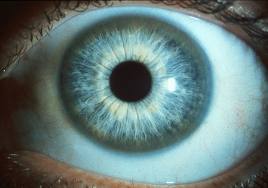Disorders
- Anorexia Nervosa
- Binge Eating Disorder
- Bitot's Spots
- Bulimia Nervosa
- Macrocytic Anemia
- Megaloblastic Anemia
- Night Blindness
- Peptic Ulcer
- Prophylaxis
- Rhodopsin
- Rickets Disease
- Scurvy Disease
- Wilson’s Disease
- Xerophthalmia
- Hemochromatosis
- Siderosis
- Thalassemia
- Sideroblastic Anemia
- Porphyria Cutanea Tarda
- Sickle Cell Anemia
- Kwashiorkor
- Menkes Disease
- Neutropenia
- Keratomalacia
- Beriberi
- Pellagra
- Macrocytic
- Megaloblastic
- Pernicious Anemia
- Scurvy
- Rickets
- Osteomalacia
- Abetalipoproteinemia
- Muscular Dystrophy
- Haemolytic Anaemia
- Cholestatic Constipation
- Pretibial Myxedema
- Cretinism Diesease
- Hypothyroidism
- Hypothyroidism
- Feline Hyperthyroidism
- Graves Disease
- Plummer’s Disease
- Thyrotoxicosis
- Acrodermatitis Enteropathica
- Congenital Hypothyroidism
- Hashimoto’s Thyroiditis
- Hyperthyroidism
- Keshan Disease
- Lose Weight with Hypothyroidism
- Metal Fume Fever
- Postpartum Thyroiditis
- Thyroid Storm
- Subclinical Hypothyroidism
Wilson’s Disease

Wilson’s disease (also known as Hepatolenticular degeneration) is a potentially fatal disease that is caused by excess copper accumulation which can severely damage the organs. It is a rare genetic disorder which affects only 1 in 30,000 people worldwide. And while it is most common in eastern Europeans, Sicilians, and southern Italians, it affects men and women in all racial groups.
Cause of Wilson's Disease
A mutation in the ATP7B gene is the root cause of Wilson’s disease. When two defective ATP7B genes are inherited from both parents, the disease is developed. If you happen to have one defective gene, there’s a chance you could pass it on to your children. It occurs equally in men and women, therefore is not sex-linked.
Copper is needed for healthy body functioning. However, excessive copper accumulation can have dangerous effects on the body.
Copper levels in the body are maintained mainly by the liver. It controls them by excreting the excess copper in the bile (Bile is a liquid produced by the liver that helps with digestion). However, the body of a person suffering from Wilson’s disease, lacks this function. Therefore, the copper is built up in the body, resulting in the liver being damaged. The brain, kidneys and cornea can also be damaged.
Symptoms of Wilson's Disease
The first symptoms of this disease can be neurological, psychiatric or both.
Visible symptoms include rigidity, tremors, drooling, difficulty with speech, abrupt personality change and grossly inappropriate behavior. Also, due to the copper build-up on the cornea, patients develop brownish or gray-green colored rings around the eye.
Internal symptoms include fluid buildup in the lining of the abdomen, anemia, low platelet and white blood cell count in the blood, high levels of amino acids, protein, uric acid, and carbohydrates in urine, and softening of the bones.
Tests can be done to find out the level of copper in the urine or liver. They can also be conducted to detect low levels of ceruloplasmin (the blood's way of carrying copper around within the body) in the blood.
A liver biopsy may also be needed, in some cases.
Wilson's Disease Treatment
The drug used to treat the majority of cases of Wilson’s disease, is penicillamine. However, some people might be intolerant of this particular drug. For them, the drug trientine may be used. If the symptoms worsen, then they are treated with the drug British Anti Lewisite (BAL), which may result in their condition improving. For pregnant patients, oral zinc can be used.
In very rare cases, sudden and severe hepatitis and hemolytic anemia can occur. Then, the only thing that can prevent certain death, is a liver transplant.
As far as diet is concerned, intake of foods rich in copper should be avoided. These include organ foods, nuts, chocolate, shellfish and legumes.
